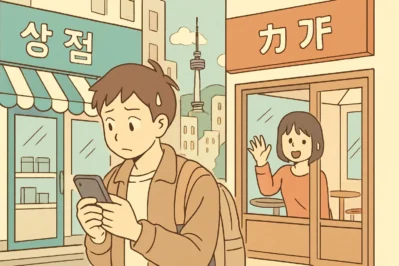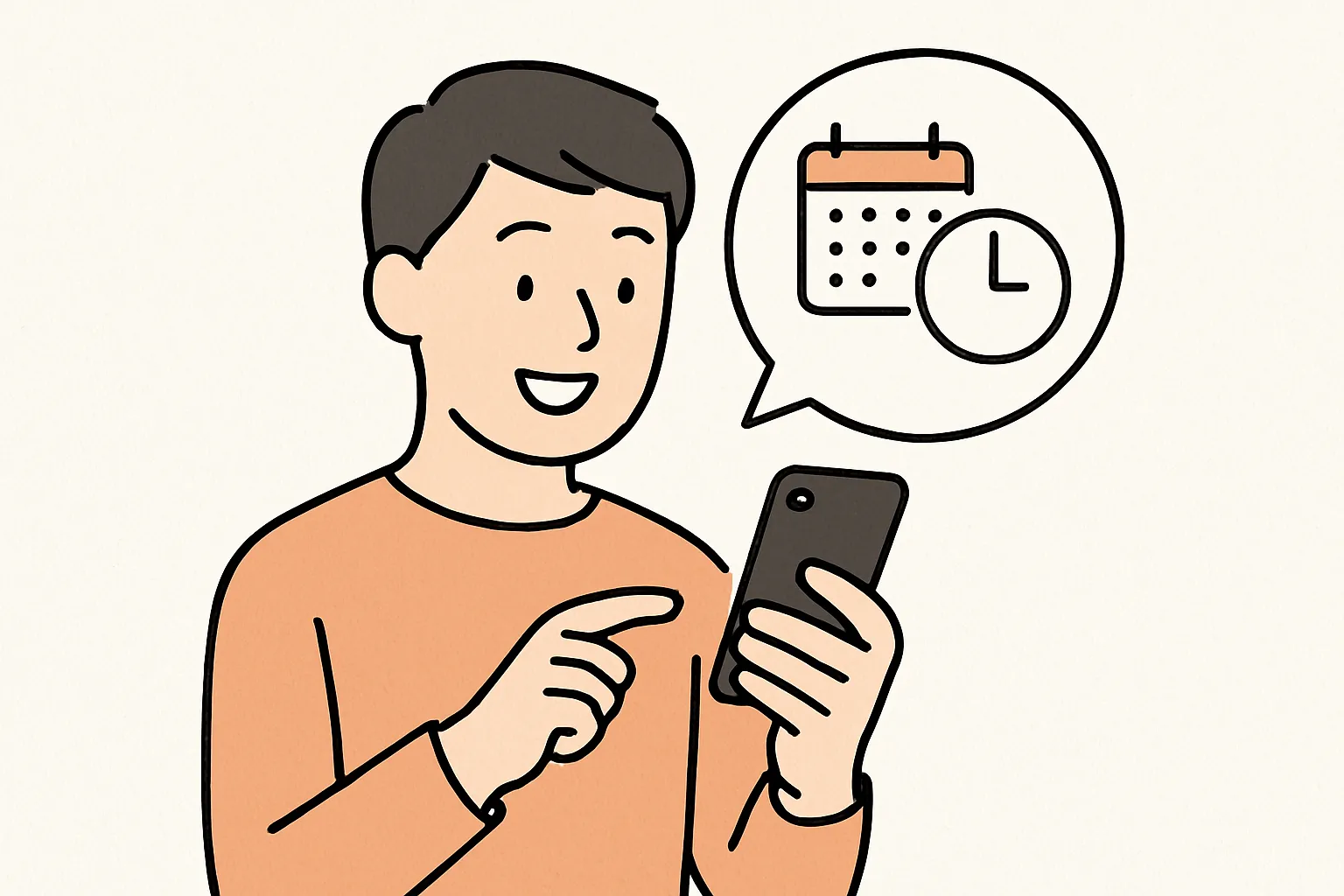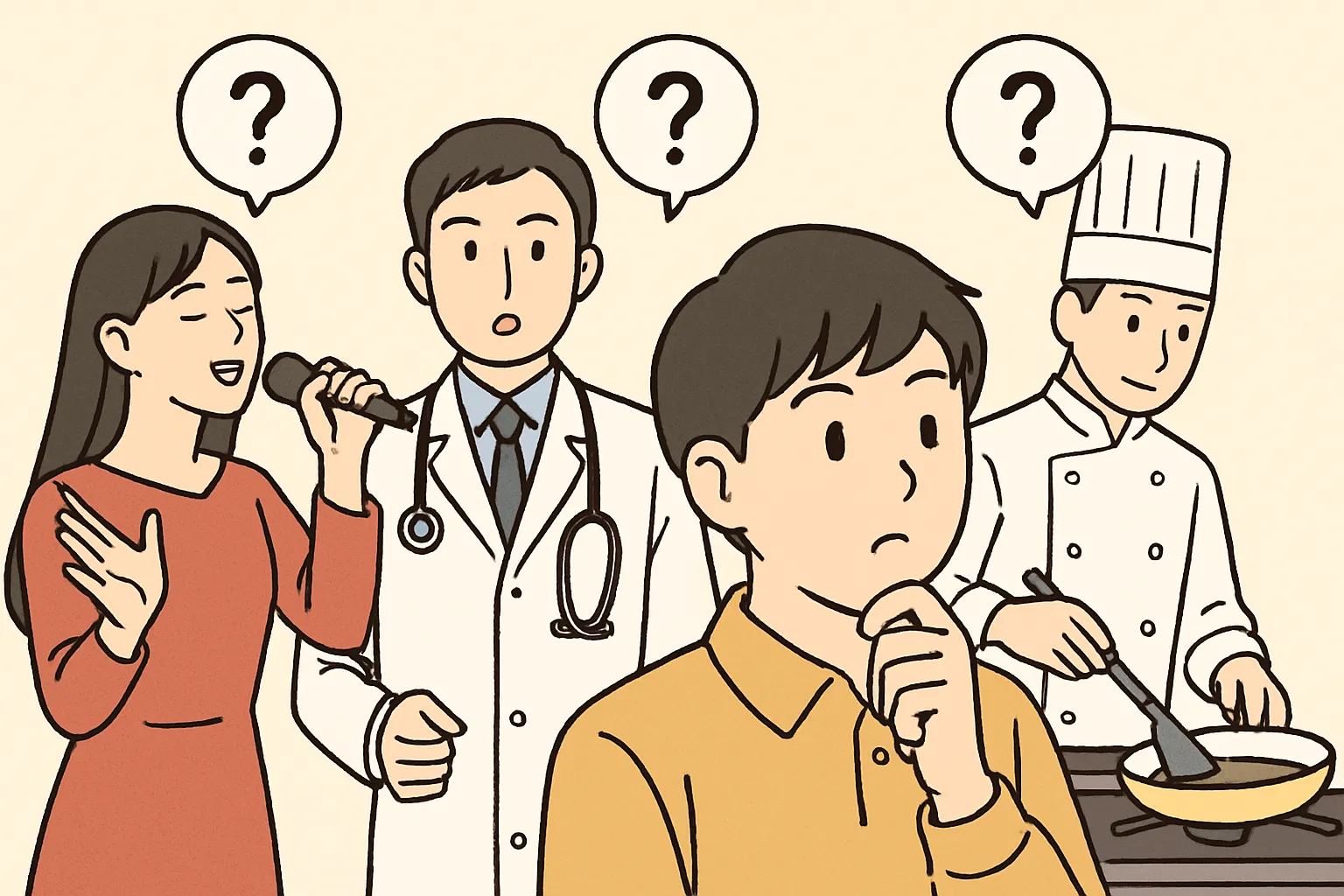Lost in Seoul? Find Your Friend with These Korean Words!
Hello! This is Maeil Hangul, here to upgrade your Korean skills!
Have you ever been waiting for a friend in a new place, frantically texting, “Where are you?!” Today, we’re going to solve that problem by learning essential Korean words for describing your location. This is super useful for meeting up with friends, giving directions, or just navigating Korea like a local.
And speaking of meeting up, have you seen the latest K-dramas? Lately in Korea, it’s a fun trend to visit filming locations from popular shows like ‘Lovely Runner’ and recreate iconic meet-up scenes. To do that, you’ll need to know exactly how to say “I’m in front of the school” or “I’m next to that cute cafe.” So let’s get you ready for your own K-drama moment!
Your Location Cheat Sheet (핵심 표현)
Here are the must-know words to tell someone exactly where you are. We use these words after a noun (the place) and add the particle 에 (e), which means ‘at’ or ‘in’.
1. 앞 (ap) – In Front Of
- Korean: 앞 (ap) + 에 (e) -> 앞에 (ap-e)
- Pronunciation: [ap-eh]
- English Meaning: In front of
- Detailed Explanation: This is probably the most common location word you’ll use. You can use it for any landmark. For example, 학교 앞에 (hak-gyo ap-e) means “in front of the school.” It’s a simple and direct way to set a meeting point.
2. 뒤 (dwi) – Behind
- Korean: 뒤 (dwi) + 에 (e) -> 뒤에 (dwi-e)
- Pronunciation: [dwi-eh]
- English Meaning: Behind
- Detailed Explanation: The opposite of ‘앞’. If you’re hiding or waiting in a less obvious spot, you can use this. For example, 그 건물 뒤에 (geu geon-mul dwi-e) means “behind that building.”
3. 옆 (yeop) – Next To / Beside
- Korean: 옆 (yeop) + 에 (e) -> 옆에 (yeop-e)
- Pronunciation: [yuhp-eh]
- English Meaning: Next to, beside
- Detailed Explanation: Super useful when you’re near a specific store or object. If your friend can’t find the school gate, you can say you’re 편의점 옆에 (pyeon-ui-jeom yeop-e), which means “next to the convenience store.”
4. 안 (an) – Inside
- Korean: 안 (an) + 에 (e) -> 안에 (an-e)
- Pronunciation: [an-eh]
- English Meaning: Inside
- Detailed Explanation: What if it starts raining while you wait? You can go inside and text your friend! 카페 안에 (ka-pe an-e) means “inside the cafe.” Easy, right?
Example Conversation (예시 대화문)
Let’s see how these words are used in a real conversation. Imagine Sua and Brian are meeting after school to grab some trendy tanghulu (a candied fruit snack).
- Sua: 브라이언, 어디야?
- [Brian, eo-di-ya?]
- Brian, where are you?
- Brian: 나 학교 앞에 있어. 너는?
- [Na hak-gyo ap-e isseo. Neo-neun?]
- I’m in front of the school. What about you?
- Sua: 아, 진짜? 나도 거의 다 왔어. 편의점 옆에 있는 탕후루 가게 보여?
- [A, jin-jja? Na-do geo-ui da wass-eo. Pyeon-ui-jeom yeop-e it-neun tang-hu-ru ga-ge bo-yeo?]
- Oh, really? I’m almost there. Do you see the tanghulu shop next to the convenience store?
- Brian: 응, 보여! 그럼 그 카페 안에서 만나자!
- [Eung, bo-yeo! Geu-reom geu ka-pe an-e-seo man-na-ja!]
- Yep, I see it! Then let’s meet inside that cafe!
Culture Tip & Trend Deep Dive
In Korea, being specific about your meeting point is everything! Especially in bustling areas like Hongdae or Gangnam, just saying the station name isn’t enough. People use landmarks and our new location words all the time.
You’ll hear friends making plans like, “Let’s meet in front of the Olive Young” (올리브영 앞에서 만나) or “next to exit 3″ (3번 출구 옆에서).
And here’s how you can join the trend! Fans of the hit K-drama ‘Lovely Runner’ have been visiting the filming locations and posting photos on Instagram. They write captions like, “선재, 나 여기 학교 앞에 있어!” (Sunjae, I’m here in front of the school!), quoting the main character. Using 앞에 (ap-e) makes it so much more authentic and fun. Now you can do it too!
Let’s Wrap It Up & Practice!
Great job today! You’ve learned four essential Korean location words: 앞 (in front of), 뒤 (behind), 옆 (next to), and 안 (inside). You’re now ready to meet your friends in Korea without getting lost!
Let’s test your new skills.
- Fill in the blank: How would you say “The cat is behind the chair”?
- 고양이가 의자 ___ 있어요. (Chair = 의자 [ui-ja])
- Make a sentence: You are waiting for your friend inside the library. How do you text them?
- (Library = 도서관 [do-seog-wan])
Try to answer the questions in the comments below! Or even better, make your own sentence using one of today’s words. We can’t wait to see what you come up with






